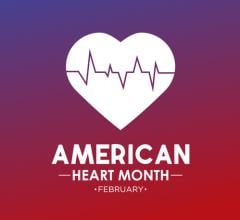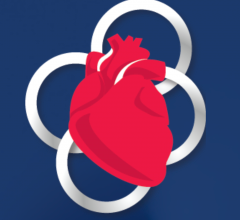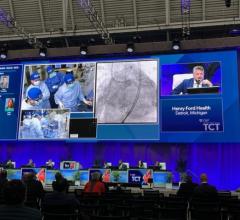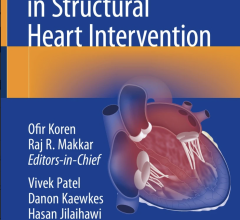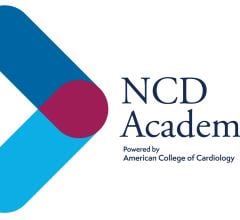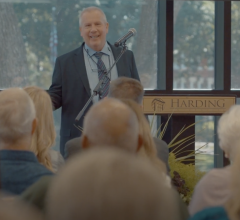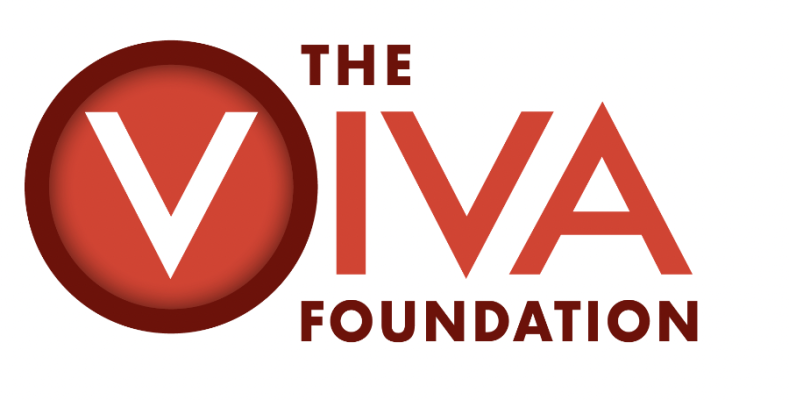
Results from five clinical trials were presented during the VIVA (Vascular InterVentional Advances) Conference, VIVA23, providing outcomes from studies on treatment for Chronic limb-threatening ischemia (CLTI), use of drug-coated balloons, among other highly-anticipated late-breaking science findings. Image courtesy: VIVA Foundation.
November 1, 2023 — The VIVA Foundation has announced the results for the first Late-Breaking Clinical Trial sessions at the VIVA23 Conference, hosted at Wynn Las Vegas.
VIVA (Vascular InterVentional Advances) is an annual vascular education symposium that brings together a global, multispecialty faculty to present a variety of talks and live case presentations from clinical centers around the world. Attendees include an audience of interventional cardiologists, interventional radiologists, vascular surgeons, and endovascular medicine specialists. Below are highlights of five late-breaking clinical trial presentations offered on Oct. 31 during the annual conference.
A summary of highlights of the first five trial sessions, provided by The VIVA Foundation follows:
“12-Month Results from the PROMISE II U.S. Pivotal Trial of the LimFlow System” results were presented as follows by Daniel Clair, MD, Vanderbilt University Medical Center:
Chronic limb-threatening ischemia (CLTI), considered the end stage of peripheral artery disease, contains within it a subset of no-option patients who present with a disease state so complex that currently available surgical and endovascular techniques are not sufficient, and major amputation is considered the only solution. We report the 1-year results of the multicenter PROMISE II trial, the pivotal investigational device exemption study of the purpose-built LimFlow system (LimFlow, Inc.) for transcatheter arterialization of deep veins (TADV) in the treatment of no-option CLTI patients.
The TADV procedure permanently bypasses unreconstructible arteries and leverages healthier veins as a conduit to create new routes to perfuse tissue in the foot. At 20 centers without roll-ins across the United States, 105 no-option CLTI patients were enrolled in a nonrandomized manner. All enrolled patients had Rutherford class 5 or 6 disease and were deemed by an independent committee of experts to be ineligible for endovascular or surgical procedures to restore blood flow. Patients underwent TADV using the LimFlow system.
The median age was 70 years, two-thirds of the patients were male, and one-quarter of patients were Hispanic or Latino. Most patients presented with preexisting comorbidities, including diabetes, hypertension, dyslipidemia, and a history of intervention on the index limb. All patients presented with a nonhealing ulcer or frank gangrene and were classified as either Rutherford class 5 or 6. At 1 year, limb salvage was maintained in 69% of patients, the average wound area was 0.2 cm2, and the average pain score (scale, 0-10) was 1.4. More than half of patients were classified as Rutherford class 0 at 1 year.
The 1-year results of PROMISE II demonstrate durability of outcomes of the TADV procedure using the LimFlow system and that the procedure is safe and reproducible.
“Wearable, Non-Invasive Therapeutic Ultrasound to Increase Perfusion in Chronic Limb-Threatening Ischemia: An Early Feasibility Study,” presented by Mahmood Razavi, MD, included the results below:
Preclinical studies have demonstrated that therapeutic ultrasound (TUS) increases perfusion in peripheral artery disease (PAD) and coronary artery disease. The PRELUDE single-arm early feasibility study enrolled 12 patients with Rutherford class 3 to 5 PAD to receive 30 to 40 treatments of 90-minute TUS using the LimbSonic device (Vibrato, Inc.), a wearable, noninvasive array of transducers engineered to sonicate the posterior and anterior tibial arteries (and their collaterals) at the level of the calf.
Acutely, TUS increased lower extremity perfusion 180% via laser speckle imaging (FlowMet, Medtronic) and laser Doppler, as well as tissue oxygenation via spatial frequency domain imaging (Clarifi, Modulim) and transcutaneous oximetry (TcPO2). After 30 to 40 TUS sessions, Clarifi tissue oxygenation was elevated 17% above the pretreatment baseline and remained elevated 1 month posttherapy, with return to baseline by 3 months. Patient-reported outcome measures (Vascular Quality of Life Questionnaire-6 and Walking Impairment Questionnaire) both improved after TUS sessions but returned to baseline by 6 months. Toe‑brachial index did not change acutely. Tolerability, compliance, and patient feedback were excellent, and there were no serious adverse events.
In the absence of an accepted non-invasive metric of response to therapy in PAD/chronic limb-threatening ischemia, future studies will assess clinical endpoints of wound healing, amputation, and revascularization.
“1-Year Results of the DEEPER OUS Trial: The Bare Temporary Spur Stent System in Combination with a Paclitaxel-Coated Balloon,” which were presented by Thomas Zeller, MD, were outlined as follows:
The DEEPER OUS trial is a prospective, nonrandomized, multicenter, single-arm trial taking place in New Zealand, Germany, and Switzerland. The purpose is to evaluate the safety and efficacy of a novel device, the Bare Temporary Spur stent system (Reflow Medical), in conjunction with a commercially available drug-coated balloon (DCB) in patients with symptomatic infrapopliteal arterial disease. In-person follow-up occurs at 1, 3, 6, and 12 months post procedure, with telephone call follow-up annually out to 5 years.
The primary efficacy endpoint is primary patency of treated lesion sites by duplex ultrasound in patients who are free from clinically driven target lesion revascularization (CD-TLR) at 6 months. The primary safety endpoint is freedom from device- and procedure-related death through 30 days post procedure. Secondary endpoints include safety-related and clinical outcome measures.
The trial enrolled 107 patients. Lesion characteristics showed an average treated length of 92.7 ± 36.63 mm, and the most commonly used Spur size was 3 X 60 mm, with an average reference vessel diameter of 3.1 ± 0.48 mm. Approximately 60% of vessels were mildly calcified, with the most common TASC classification being class B (37.2%, 51/106).
Outcomes at 12 months in the per-protocol population are as follows:
- Target lesion primary patency was achieved in 57/71 (79.2%)
- Freedom from CD-TLR was achieved in 71/80 (88.8%)
- The secondary efficacy endpoint of improvement in Rutherford class showed statistically significant improvement from baseline through 12 months.
- The secondary efficacy endpoint of wound healing showed improvement from baseline through 12 months, with approximately 60% of wounds achieving total wound healing.
- Analysis of the secondary safety endpoint of freedom from major amputation of the target limb at 12 months was 78/78 (100%).
- The Bare Temporary Spur Stent System is safe and effective for the treatment of infrapopliteal arterial disease when used in conjunction with a commercially available DCB.
“Directional Versus Orbital Atherectomy of Femoropopliteal Artery Lesions: Revascularization and Restenosis Rates at 24 Months,” presented by Anvar Babaev, MD, PhD, NYU Langone, produced the following summary outcomes:
This study is the first to evaluate the impact of orbital versus directional atherectomy on atherosclerotic plaque in patients with peripheral artery disease (PAD) in a prospective, head-to-head, randomized fashion.
Sixty patients with symptomatic PAD due to stenotic lesions in the femoropopliteal artery were randomized in 1:1 fashion either to orbital or directional atherectomy. After atherectomy, lesions were treated with drug-coated balloon (DCB). Intravascular ultrasound (IVUS) was performed before and after atherectomy, as well as after DCB treatment. The primary endpoints were change in plaque and luminal volume via IVUS and change in angiographic stenosis. The secondary endpoints were device success rate and rate of bailout stenting, as well as restenosis and revascularization rates at up to 3-year follow-up. This presentation focuses on 24-month restenosis and revascularization rates. At the index procedure, compared to orbital atherectomy, directional atherectomy demonstrated a greater plaque volume reduction and luminal gain, with significantly fewer stents needed post-DCB.
At 24 months, we observed numerically higher restenosis and revascularization rates in the orbital compared to the directional atherectomy group that did not reach statistical significance. The difference was more pronounced in patients who were not stented during the index procedure. Comparing the directional arm to the orbital atherectomy arm, the restenosis rates were 13% versus 33.3% (P = .15), respectively, and the revascularization rates were 13% versus 27.8% (P = .27), respectively. Larger studies and longer follow-up are needed to further evaluate these observed findings.
“5-Year Outcomes of the Gore® Viabahn® Endoprosthesis for the Treatment of Complex Femoropopliteal Lesions in a Japanese Population” was presented by Osamu Iida, MD, with the following highlights:
The purpose of this study is to assess safety and effectiveness of the Gore Viabahn endoprosthesis (Gore & Associates) for the treatment of symptomatic lower extremity arterial disease (LEAD) in complex femoropopliteal (FP) lesions in a Japanese population. This prospective, multicenter, postmarket surveillance study was conducted in symptomatic LEAD patients with FP lesions ≥ 10 cm and reference vessel diameters ranging from 4 to 7.5 mm. Efficacy endpoints evaluated at 5 years were primary patency (PP), primary assisted patency (PAP), secondary patency (SP), and freedom from target lesion revascularization (fTLR), while safety endpoints were occurrence of device- or procedure-related serious adverse events (SAEs) and stent fractures.
A total of 321 patients were enrolled at 64 Japanese sites from 2016 to 2017. The mean age was 73.9 ± 8.7 years, and frequency of dialysis and chronic limb-threatening ischemia were 23.1% and 26.5%, respectively. Mean lesion length was 23.6 ± 6.6 cm, and frequency of TASC II C/D lesions and chronic total occlusion were 86.6% and 70.4%, respectively. A total of 562 devices were implanted in 324 limbs; of those, Kaplan-Meier–estimated PP, PAP, SP, and fTLR were 69.8%, 82.6%, 88.9%, and 81.1% at 3 years, respectively, and 62.4%, 74.1%, 82.3%, and 75.9% at 5 years, respectively. Through 5 years, cumulative device- or procedure-related SAEs were 19.9%, with only 9.3% of those occurring after the first 12 months. Patients were 100% free from stent fractures and acute limb ischemia, and 97.4% were free from major adverse limb events.
This study showed that safety and effectiveness of the Viabahn endoprosthesis were clinically acceptable for treating complex FP lesions in Japanese patients with LEAD through 5 years. Patients with LEAD and complex FP lesions treated with the Viabahn endoprosthesis have long-term acceptable safety and efficacy, making this an alternative to surgical bypass therapy.
The VIVA Foundation is a not-for-profit organization dedicated to advancing the field of vascular medicine and intervention through education and research, strives to be the premier educator in the field. It reports that its team of specialists in vascular medicine, interventional cardiology, interventional radiology, and vascular surgery is driven by the passion to advance the field and improve patient outcomes, adding that educational events presented by the VIVA Foundation have a distinct spirit of collegiality attained by synergizing collective talents to promote awareness and innovative therapeutic options for vascular disease worldwide.
More information: www.viva-foundation.org
Follow more VIVA23 news from DAIC here.

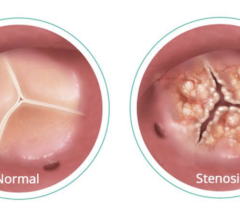
 April 25, 2024
April 25, 2024 

